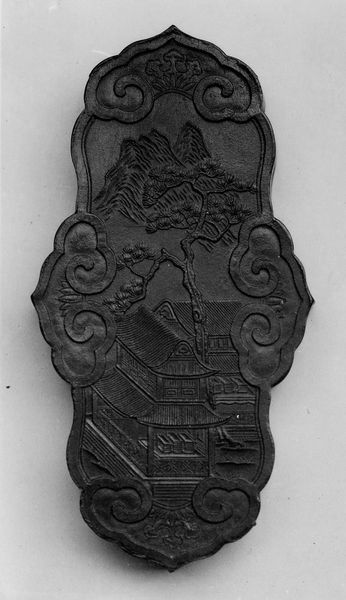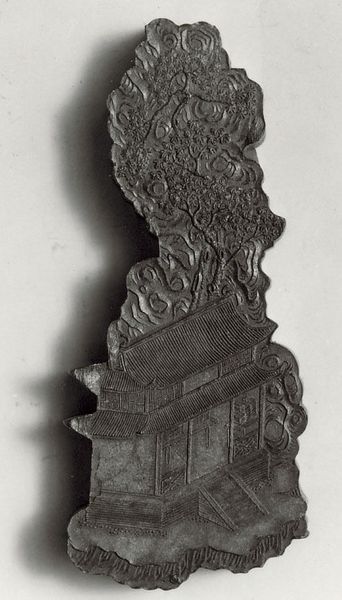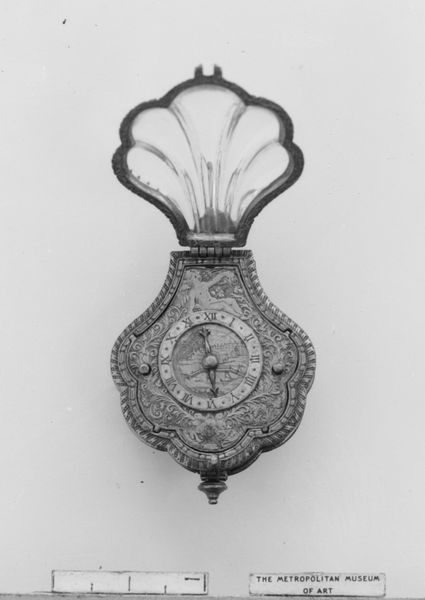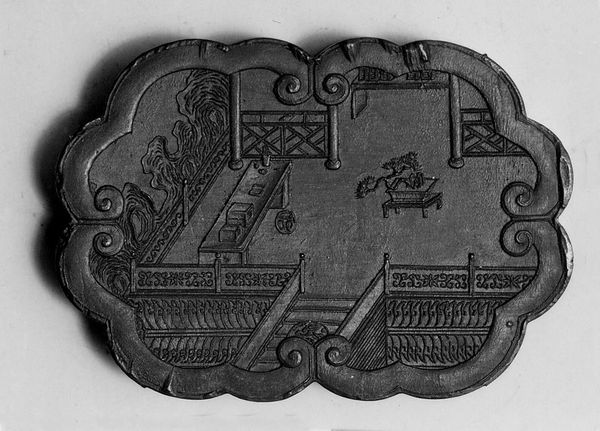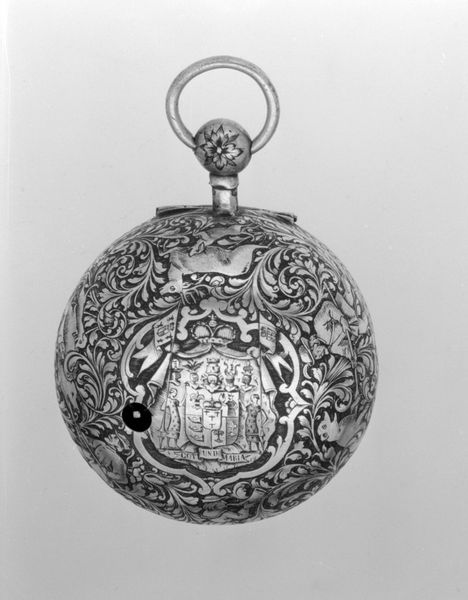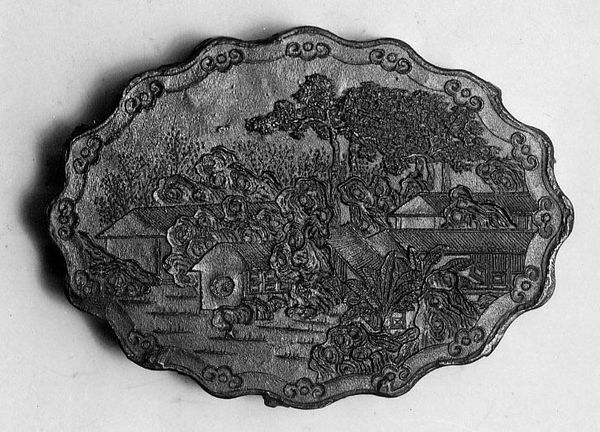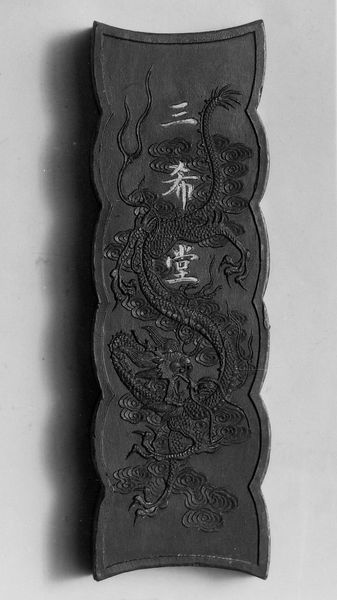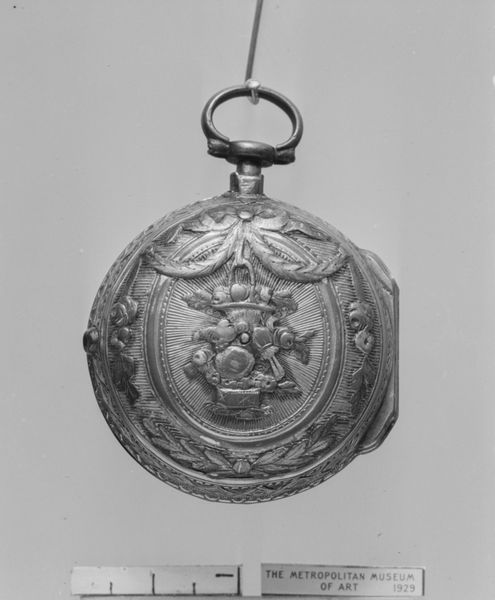
carving, relief, sculpture, wood
#
carving
#
sculpture
#
asian-art
#
relief
#
landscape
#
sculpture
#
wood
Dimensions: H. 3 5/8 in. (9.2 cm); W. 2 3/4 in. (7 cm)
Copyright: Public Domain
Curator: Gazing upon this sculpture, one cannot help but observe the elegant, almost austere simplicity. Editor: Indeed. There is an interesting tension between that immediate impact, and the very laborious handiwork in this wood carving made by Jian Guzhai, titled "Ink Pond Clouds" crafted sometime between 1871 and 1933. The Metropolitan Museum houses this work. I am curious to know about the origins and context of these wood carving. Curator: Formally speaking, we should note the careful integration of positive and negative space and how this reinforces its narrative clarity. Observe the meticulous detail with which the landscape has been created—a composition filled with architectural marvels under a billowing sky. It is as if the artist wished to encapsulate entire cosmological notions within a compact space. Editor: Right, considering how each mark made during carving is evidence of process and deliberate choices, could this labor symbolize human interactions with environment, given how architecture fits among landscape. Think about the sculptor's process. Did he or she consider any specific tradition for the visual impact or how carving methods change wood and reflect this tradition? Curator: Tradition certainly dictates compositional structures, leading us to reflect on conventional landscape idioms and ways that the artist, possibly subverts them through particular choices. The eye travels without impediment due in part to such thoughtful placement, which keeps within a conventional, but harmonious range that guides us smoothly through. Editor: I agree in how the sculptural medium is more than just aesthetics, considering the working processes from this piece, and it serves now as artifact for this history that is embodied when it sits on display. I consider these to show more than just formal design but cultural importance by highlighting how materials can alter experience and expression. Curator: It invites us to recognize how the art serves beyond surface. The structural and philosophical harmony presents ways by which a work communicates. Editor: And for materialists, the artifact stands, linking craft to deeper issues encompassing human agency in molding cultural landscape with every chisel, revealing links connecting societal worth that go back across epochs!
Comments
No comments
Be the first to comment and join the conversation on the ultimate creative platform.

